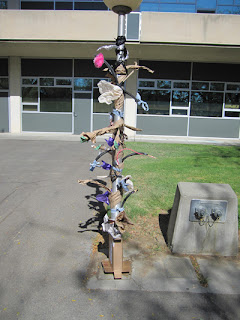Lampo Leong, a professor of art in painting and drawing at the University of Missouri, Columbia, visited UC Davis last Thursday to give a lecture on his theory on the visual forces of the Ω (Omega) Curve. For those who may not know, Lampo Leong is an internationally acclaimed painter, calligrapher, and multimedia artist. He received his BFA in brush painting from the Guangzhou Academy of Fine Arts in China, his MFA in painting from the California College of the Arts in San Francisco, and his Ph.D. in Art Theory and Practice at the Central Academy of Fine Arts in Beijing.
Lampo Leong’s theory focuses on the shape of the omega curve and how it exists in architecture and the composition of many artworks tracing back to early history from both eastern and western art. He points out similarities such as the omega shape appearing in ancient Chinese calligraphy, also reappearing in early European paintings. The specific shape of the omega curve create tension and energy versus a straight line. This is why many artists have intentional compositions with hidden omega curves. Relating the idea to Chinese calligraphy, he explains how omega curves create flow and movement where our eyes can travel and follow and that is what makes calligraphy so appealing to people.
After the lecture, Lampo Leong gave a quick calligraphy demonstration. Calligraphy is a combination of visual and performance art, where the shape and curves reflect movement and feeling. It is the coordination of the mind, heart and hand to create a line that carries strength, energy, and the spirit of the artist.
Credits:
http://web.missouri.edu/~leongl/Biography%20file/bio%20text/EnglishBiography/BiographicalSum.html
http://www.flickr.com/groups/worldtrekker/discuss/72157603516527143/
http://www.flickr.com/groups/worldtrekker/discuss/72157603516527143/
http://www.corbisimages.com/Enlargement/AX050876.html











